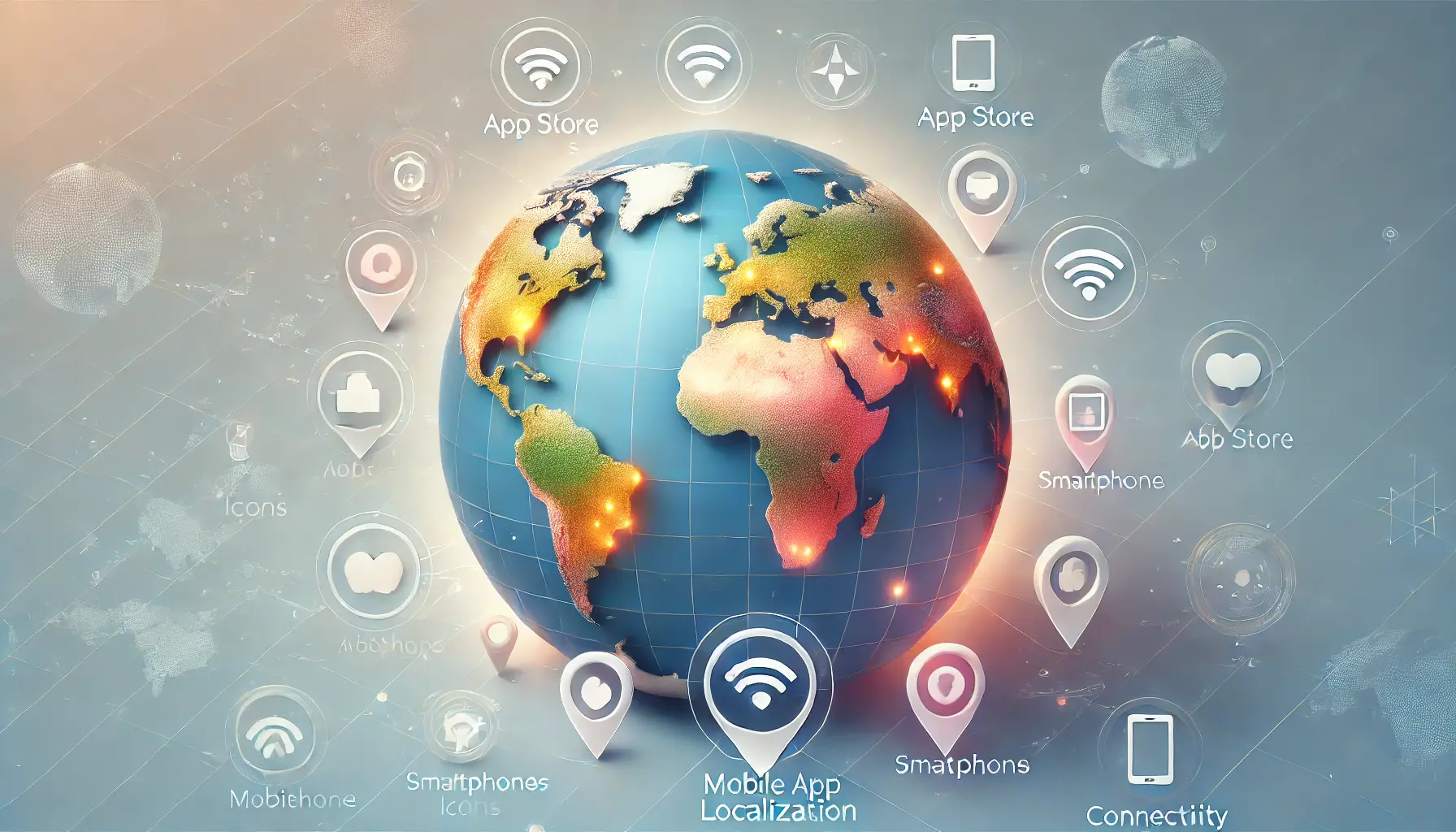In the rapid growth of digital marketing, it is quite challenging to get through that 1 app out of millions available on the App Store today.
This is no news for you if you are an App Developer.
ASO is critical to boost your app’s visibility in an increasingly competitive app market, ensuring a steady flow of organic downloads.
Enter App Store Optimization (ASO).
Your ASO efforts will increase the visibility of your app and generate user interest, which will result in more downloads.
However, given the regular updates to app store algorithms and huge competition, how do you make sure your application gets noticed?
Fortunately, in this post, we will break down the essential strategies to use with ASO for 2024 so that you can keep up and make your app shine!
We will start with the basics of ASO and explain its importance for your app to be able to have a successful journey in 2024.
Basics of ASO in 2024
App Store Optimization (ASO) is the process of optimizing mobile apps in an app store—and yes, app stores offer developers opportunities to optimize their application’s visibility thanks to ASO techniques (just like SEO for websites).
Think of it as SEO for apps.
This app visibility leads to higher downloads by the users.
Remember, app visibility is not just about downloads; it’s about converting those impressions into long-term users.
ASO, though, is not all about getting your app to the top charts but also increasing conversion rates.
This involves making sure that your app can be seen by users and will then entice them to take the step of downloading it.

A dynamic visualization of the growing importance of ASO in 2024 as apps compete for visibility in a highly competitive and evolving digital market.
Why ASO is So Important in 2024
One reason is that the competition for apps is higher than ever before.
With millions of apps to choose from, the challenge for developers is simply being found.
Next, app store algorithms are always changing, so you need to keep up with any modifications that could affect your app’s ranking.
Lastly, user behavior keeps changing all the time.
What drove success for ASO in 2022 or 2023 may be obsolete today; so, one must keep reinventing and staying on top of the recent trends and ASO strategies.

A creative depiction of the ASO process, illustrating how app visibility and rankings are optimized through data-driven elements.
Why and What is ASO?
App Store Optimization is the process of optimizing your app to rank higher in an app store’s search results.
The better you rank your app, the more accessible and visible it would be to prospective users.
The end result here is improved visibility, which means more downloads.
In turn, this can lead to increased revenue and growth for your app.
But why is ASO so important?
ASO provides an effective and sustainable alternative to costly paid ads, ensuring steady organic growth without breaking the bank.
In short, app store search is how the majority of users find apps.
You are losing a big audience of new users if you don’t have an optimized app.
Also, ASO is budget-friendly.
Although paid ads can give you a visibility boost, for most of us, they are unaffordable and unsustainable.
On the flip side, ASO is an organic strategy that, if executed correctly, can offer long-term rewards at a low, steady cost compared to paid advertisements.

A visual comparison highlighting the key differences between ASO and SEO, representing the optimization of mobile apps versus websites.
ASO vs SEO: Key Differences
ASO and SEO are related in some aspects, but ASO is not exactly the same as traditional search engine optimization.
SEO helps you to optimize websites for ranking on Google and other search engines, while with ASO, it becomes about optimizing mobile apps in app stores like the App Store or Google Play Store.
- Platforms: SEO is the gateway to search engines, whereas ASO is the entrance for app stores.
- Keywords: SEO keywords are broader, while ASO keywords are focused on app-related searches and terms.
- Ranking Factors: SEO is based on backlinks and the quality of website content, whereas ASO factors include app title, keyword strength, ratings, and reviews.
Knowing how these differ from one another is important when you want to create a good ASO strategy that will help your app reach its maximum potential in 2024.
ASO and SEO have their differences, but both are essential for the success of digital products in their respective platforms.

A dynamic representation of how SEO techniques can boost app visibility and downloads, showcasing the flow of data into app icons and increased rankings.
SEO Tips for Increasing App Downloads
Keyword optimization is quite possibly the main facet of App Store Optimization (ASO).
These are the words your audience will type in when they go searching for an app, and selecting them well could be very advantageous to how successful you hit or miss with yours.
Identifying the correct ASO keywords will let your app be listed among higher ranks in search results, which leads to more downloads.
In this article, we delve into some great techniques to make your ASO keywords even more effective and improve the ranking of your app in 2024.

A visual representation of high-profile ASO keyword analysis, highlighting the research and data-driven insights that help apps rise in visibility.
High Profile ASO Keywords Analysis
Keyword Research: The Beginning of SEO Success.
You have to discover the ideal keywords that your potential users are likely searching for.
Start with the app’s core functions—focus on the benefits of your app to see what users may search for in an app like this.
What might they type?
- Use Keyword Research Tools: Double down on keyword research by analyzing popular searches and using tools like Sensor Tower, App Annie, or Google Keyword Planner to find appropriate and underused ASO keywords for your app. These tools allow you to monitor the performance of keywords and discover new terms to target.
- Study Competitors: Look at what keywords your competitors are ranking for in relation to apps similar to yours. This will help you determine which keywords your direct competition ranks for and whether it’s worth targeting them.
- Work with Long-Tail Keywords: Long-tail keywords are phrases with lower competition that are highly specific to a niche audience. Though their search volume may be lower, they are more likely to result in high conversion rates, attracting users who are more likely to download your app.
By starting with thorough research and picking out the best ASO keywords suited to your app, you are already setting a solid foundation for your 2024 ASO strategy.

A visual guide to optimizing app titles and descriptions for better ASO performance, showcasing how keyword placement boosts visibility and effectiveness.
App Title and Description Keyword Optimization Guide
Your app’s title and description are some of the most important real estate you have when it comes to keyword optimization.
Your title is one of the heaviest factors for ASO, so it’s wise to include your main keyword there.
On the other hand, your description can include your secondary and supporting keywords to an even greater extent, further boosting app visibility.
- Use the Main Keyword in the Title: Ensure that your title contains your main keyword. This improves your rankings and helps users know what your app is all about right away.
- Add Supporting Keywords to the Description: Your app description should be clear and concise, with supporting keywords woven throughout. This is crucial for ASO, as the app store algorithmA step-by-step procedure or formula for solving a problem, often used in programming and app ranking. analyzes your description to determine its relevance to user searches.
- Avoid Keyword Stuffing: While it’s important to include keywords, do so in a way that doesn’t feel forced. Overstuffing keywords can make your description feel spammy, which may lead to a drop in your app’s ranking.
Making your app’s title and description more search-friendly through ASO will result in better rankings, which in turn leads to more downloads.

A polished visual representation of optimizing app store creatives, showcasing the importance of well-executed visuals like icons and screenshots for increased app performance and success.
How to Produce The Best Results in App Store Creative
Visuals are a make-or-break factor in App Store Optimization (ASO), and for good reason: they can mean the difference between converting impressions into downloads.
The first thing users see of your app are your app visuals (icon, screenshots, and video previews).
The app description, icon, and category are the first things a customer sees when searching or browsing through an application market—optimizing them is key to increasing your conversion rates in 2024.
With visibility in mind, let’s discuss how you can improve conversion rates by optimizing visuals.
A visual representation highlighting how a well-designed app icon can significantly impact ASO and user conversions by standing out and attracting attention.
Influence of App Icons on ASO and Conversions
One of the first and most apparent components users see is your app icon when browsing through a list of potential apps in the app store.
The first thing a user sees of your app needs to represent everything about your app’s purpose and appeal.
A well-designed icon can catch attention, while an unappealing one may deter users before they even discover what your app offers.
- Simple and Recognizable: Your app icon should be clean, simple (ideally minimal), and easily recognizable. Avoid clutter or excessive details that could confuse the user. For example, apps like Instagram or Twitter are instantly recognizable with just a brief glance.
- Design Should Reflect Key App Functionality: The design of the icon should align with your app’s core functionality. For instance, if your app is related to photography, the icon should have camera elements or visual hints, like a photographer’s palette, that resonate with the app’s purpose.
- Color Psychology: Colors evoke emotions and play a crucial role in your app’s branding. Choose colors that harmonize with your brand identity and appeal to your target audience, ensuring your app is easy to spot in the app store.

A visual representation of A/B testing for ASO, comparing app screenshots and videos to refine visuals and improve app performance and conversions.
A/B Testing Screenshots and Videos in ASO
Screenshots and video previews are the only ways users can visually experience what your app does, so optimizing these visuals is critical to increasing conversion rates.
Users love a visual showcase, and these elements help demonstrate everything your app can do.
- Focus on Core Features: Use screenshots and videos to highlight the most important benefits and features of your app. Make sure the first few visuals clearly show why your app is useful to users.
- Add Context with Captions: Short but descriptive captions can be added to your screenshots to help guide users through what they’re seeing. This provides a clear idea of what your app does and how it can be used.
- High-Quality Visuals: All of your screenshots and videos should be high-quality and free from pixelation or any imperfections that could make the app seem unprofessional.
Optimizing your app’s icon, screenshots, and video previews ensures that your app stands out from the competition, resulting in better visibility and increased chances of converting users in the app store.
A visual representation of tracking ASO performance, highlighting the importance of data-driven decisions to optimize app success through metrics and analytics.
Tracking ASO Performance and Making Data-Driven Decisions
As well as monitoring ASO performance and making data-driven decisions.
After you publish your App Store Optimization (ASO) strategy, it is necessary to monitor its performance and see if all that work done has been effective.
You want to know what works and then continue doing it, by tracking the right metrics so that your 2024 app becomes more visible and converts at a high rate.
In this section, we will consider the best ways to track ASO performance and use data to revise your strategy.

A representation of the key metrics for App Store Optimization, highlighting the importance of tracking data to optimize app success.
Essential Metrics for App Store Optimization
Track the Right ASO Metrics: Measuring your app’s performance is essential to understand how it is doing and where it can improve.
Some key ASO metrics to track are:
- Keyword Rankings: Track your app’s ranking for the keywords you want to target and analyze how these rankings change over time. Perform keyword tracking and trending using ASO tools to monitor performance.
- App Impressions: This metric tells you how many times your app was listed in search results or featured on the app store. A rise in impressions means better visibility for your app.
- Conversion Rate: This is the percentage of users who download your app after visiting its page. A high conversion rate indicates that your app’s visuals, description, and overall presentation are working effectively.
- User Retention (Retention Rate): Retention rate measures the number of users who return to your app after a particular period. This is an important metric for gauging user satisfaction and understanding the sustainability of your app.
- App Store Ratings and Reviews: Positive ratings and reviews not only increase the reputation of your app but also influence your app’s ASO by impacting its ranking in the app store.

A visual depiction of how data-driven decisions can enhance an ASO strategy, with graphs and analytics guiding app optimization.
Using Data to Strengthen Your ASO Strategy
Collecting data is the first part, but that data alone will only lead to insights when it is utilized for decision-making.
But how do you actually use that data to reflect back into your ASO strategy?
- Find Trends and Patterns: Identify patterns in your keyword rankings, impressions, or conversion rates. If certain keywords consistently underperform, it might be time to adjust your strategy and target more relevant or less competitive keywords.
- Testing & Optimization: A/B test app icons, screenshots, and description keywords. Optimize the elements that lead to higher conversion rates based on the data you gather.
- Reply to Reviews: Engage with users by responding to reviews and addressing their concerns. This not only improves your app’s rating but also gathers valuable feedback for future updates.
- Retention Analysis: Analyze your app’s retention data to understand why users are leaving. Use this data to improve the user experience and increase long-term retention.
By following these key ASO KPIs and continuously refining your strategy, you can ensure that your app remains competitive in the app-saturated store landscape.

A visual depiction of the future of ASO, showcasing AI-driven technology, predictive analytics, and evolving app trends shaping 2024 and beyond.
What Does the Future of ASO Look Like for 2024 & Beyond?
With technology continually changing, the practice of App Store Optimization (ASO) evolves as well.
It should come as no surprise that if you hope to outcompete others and craft your app a successful journey, staying updated with current trends—and emerging trends—is a must.
App developers must be prepared to meet new challenges and opportunities in 2024 when it comes to optimizing their apps for visibility and conversions.
In this section, we are going to discuss some of the future trends you need to be aware of and how to prepare for them.

A futuristic depiction of how AI will drive ASO advancements, optimizing keywords and app performance through data-driven insights.
Here Is How AI Will Help ASO Move Forward
From search algorithms to personalized results on an app store’s homepage, Artificial Intelligence (AI) is leading the way!
ASO tools are leveraging AI for in-app advertisements, optimal keyword selection, better visualizations, and trend prediction.
- AI in Keyword Research: AI tools are heavily used for keyword research, helping developers identify the most relevant keywords based on user behavior and search trends.
- AI-Powered Predictive Analytics: Predictive analytics, driven by AI, helps forecast the performance of different keywords and app optimizations, allowing developers to make better data-driven decisions.
- Personalized Recommendations: AI also provides personalized app recommendations to users based on their behavior, preferences, and previous downloads, making it even more important to target these trends.

A visual representation of the dynamic process of re-optimizing apps for algorithm changes, adjusting app rankings and data flows to maintain success.
How to Re-Optimize for App Store Algorithm Changes
App stores are constantly changing their algorithms, so you need to stay ahead of the game as a developer.
The spotlight is now shifting toward user engagement, app quality, and relevance instead of solely keyword optimization.
- User Engagement Metrics: App stores are increasingly looking at user engagement metrics such as session length, retention, and in-app activity. Highly engaging apps receive higher promotions and rank better in app search results.
- App Quality and Performance: App stores promote apps with better ratings, fewer crashes, and smoother performance. Ensuring that your app meets these criteria will boost your ASO ranking in search results.
- Prioritizing Relevance Over Keywords: While keywords are still important, app store algorithms are becoming more sophisticated in understanding user intent. Relevance and delivering a great user experience are now more important than merely stuffing apps with high-ranking keywords.

A visual representation of how privacy changes impact ASO, balancing data protection and app visibility in a digitally secure environment.
The Double Impact of Privacy Changes on ASO
App stores are implementing new privacy policies and regulations, affecting ASO strategies.
Transparency in how data is collected and used will be crucial for compliance and maintaining user trust.
- Data Transparency: App stores require developers to clearly communicate what data is collected from users and how it will be used. This transparency affects user trust and app visibility.
- Privacy-First ASO Strategies: Developers must prepare for a privacy-first approach, continuing to optimize their apps for visibility and engagement while complying with stricter data protection policies.

A futuristic depiction of the cutting-edge ASO tools and technologies to watch in 2024, focusing on AI-driven analytics and real-time app optimization.
Emerging ASO Tools & Technologies to Watch in 2024
New tools and technologies are regularly being developed to help developers enhance their ASO strategies.
Staying ahead of the curve with these advancements can give you a competitive edge in the app store ecosystem.
- AI and Machine Learning Tools: AI and machine learning are critical tools for optimizing keywords and improving app visibility through predictive models and data analysis.
- New A/B Testing Tools: Advanced A/B testing tools allow for more granular experimentation with app store elements like icons, screenshots, and videos to optimize conversions.
- ASO Automation: Automation tools handle tasks like keyword tracking, performance monitoring, and competitor analysis, allowing developers to focus on higher-level strategies.
It’s important to stay aware of these trends and adjust your ASO strategy accordingly to take full advantage of them in 2024.

A dynamic depiction of the bright future of ASO in 2024, showcasing growth, innovation, and success in the evolving app marketplace.
The Future of ASO Looks Bright in 2024
App Store Optimization (ASO) is still a dynamic and necessary approach for app developers interested in making their apps stand out among the copious other applications.
To truly help your app rise above the competition, drive better conversion rates, and improve overall performance, there is much more that needs to be done.
With sophisticated ASO best practices alongside data-driven solutions, we carve our way through the fiercely competitive app store landscape, where others will be fighting for their places in 2024 and beyond.

A visual representation of the foundational elements of ASO, focusing on keyword optimization, app visibility, and user engagement.
The Basics of ASO
Get ASO basics right first: as with any marketing discipline, the bedrock of a solid ASO strategy is ensuring that you get the foundations correct.
Learning how to optimize your keywords and app metadata is crucial, as it significantly affects the search rankings of your app.
In a saturated category like productivity apps, your app must be discovered either organically or through paid efforts.
Make sure to optimize the title, description, and visuals with relevant ASO keywords.

A visual depiction of conversion-optimized visuals for app stores, showcasing how appealing designs drive user engagement and app downloads.
Conversion-Optimized Visuals
In the end, visuals are what get you from impressions to downloads in ASO.
A well-designed app icon, compelling screenshots, and engaging video previews are incredibly important.
These assets must stand out and clearly communicate the value your app offers to users.
Test and optimize these elements frequently to generate up to 341% higher conversion rates for your app in 2024.

A visual representation of the continuous process of assessing app performance and making data-driven decisions to optimize app store success.
Assessing Performance and Data-Driven Decision Making
Tracking your major ASO metrics cannot be overstated.
By monitoring your keyword rankings, impressions, conversion rates, and user engagement, you can refine your ASO strategy over time.
Pivoting based on data insights ensures your app maintains visibility in today’s dynamic app store ecosystem.

A visual representation of the dynamic process of adapting to future trends and innovations in app optimization, driven by AI and emerging technologies.
Adapting to Upcoming Trends and Innovations
As we look toward 2024, AI and machine learning will be crucial to optimizing ASO efforts.
These technologies help developers predict trends with more accuracy, automate tedious tasks, and provide in-depth analyses of user behavior.
Staying ahead of app store algorithm changes, focusing on engaging users, and responding to privacy-first strategies will shape the future of ASO.
By following these advanced techniques and keeping up with emerging trends, developers can ensure their apps remain visible, engaging, and effective.
As the app store landscape continues to evolve, so too must your ASO strategy.
This flexibility is essential to succeed in the highly competitive world of apps as we move forward into 2024 and beyond.

A representation of a modern ASO FAQ section, providing clarity and insights into common questions about app optimization in 2024.
Boost your mobile app's success with our guaranteed App Store Optimization (ASO) service. Leave it to the experts!
ASO 2024 FAQ
Below are some of the frequently asked questions related to App Store Optimization (ASO) which will help you understand the basics and methods as we plan for 2024.
App Store Optimization (ASO) is the process of improving a mobile app’s visibility within an app store like Google Play or Apple iTunes for iOS devices.
It is the key to driving organic downloads and app success in a competitive market.
The first step is identifying relevant ASO keywords based on your app’s core features and user benefits.
Use ASO tools to research and target high-impact keywords that are influenced by user behavior, search trends, and competitor analysis.
Your ASO strategy should be updated regularly, particularly when app store algorithms change or new trends emerge.
Continuous performance monitoring allows you to adjust strategies to improve key metrics like visibility and conversions.
App icons, screenshots, and video previews all play a critical role in ASO.
These visual elements affect conversion rates by attracting user attention and showcasing key features.
Visual optimization is essential to encourage downloads.











